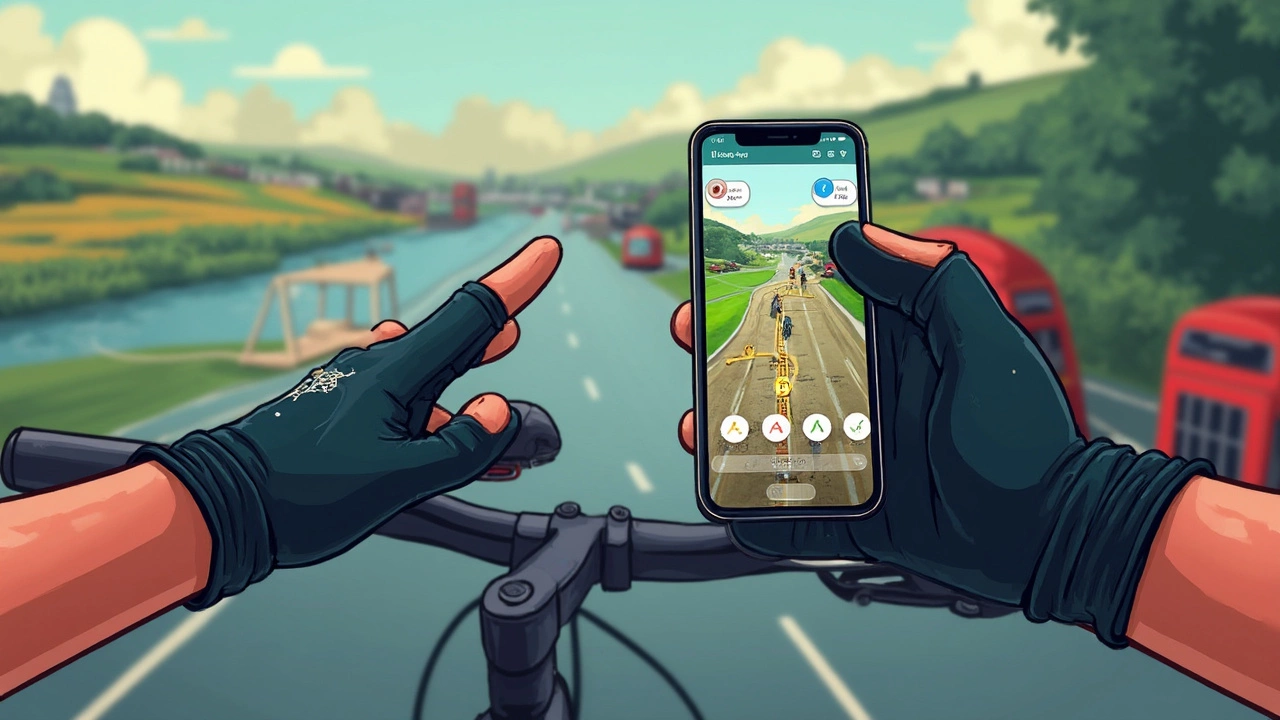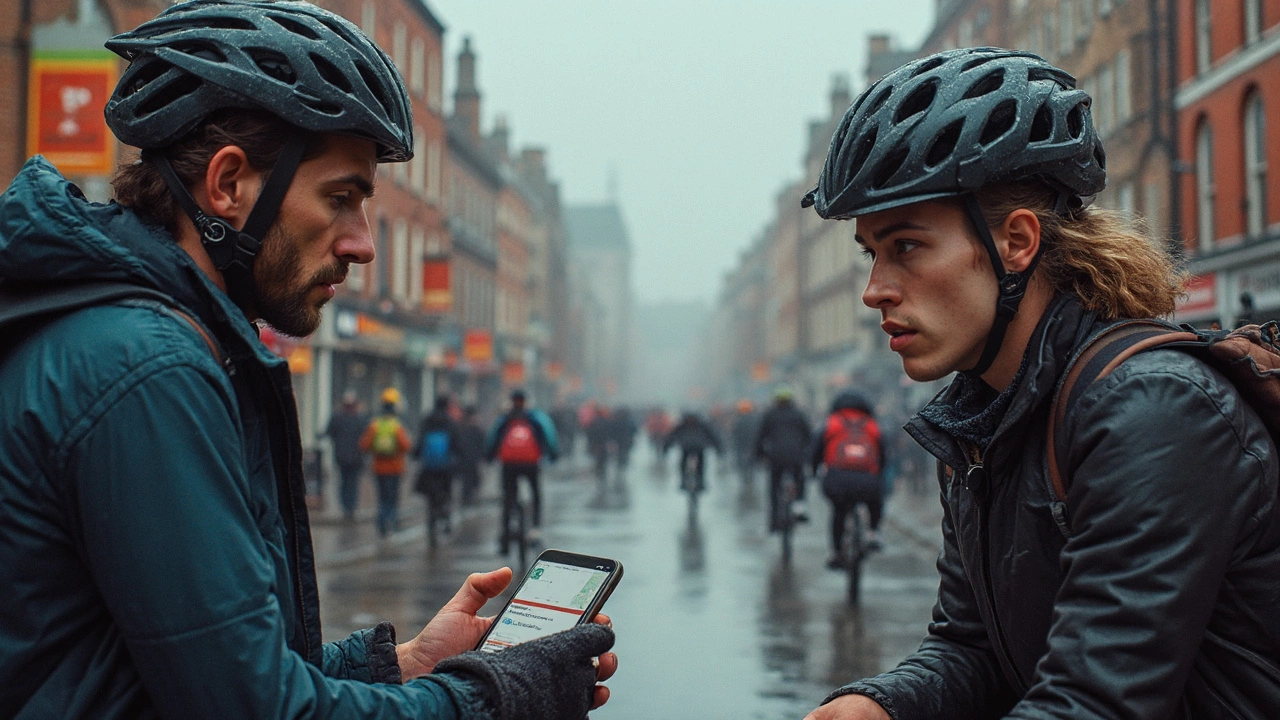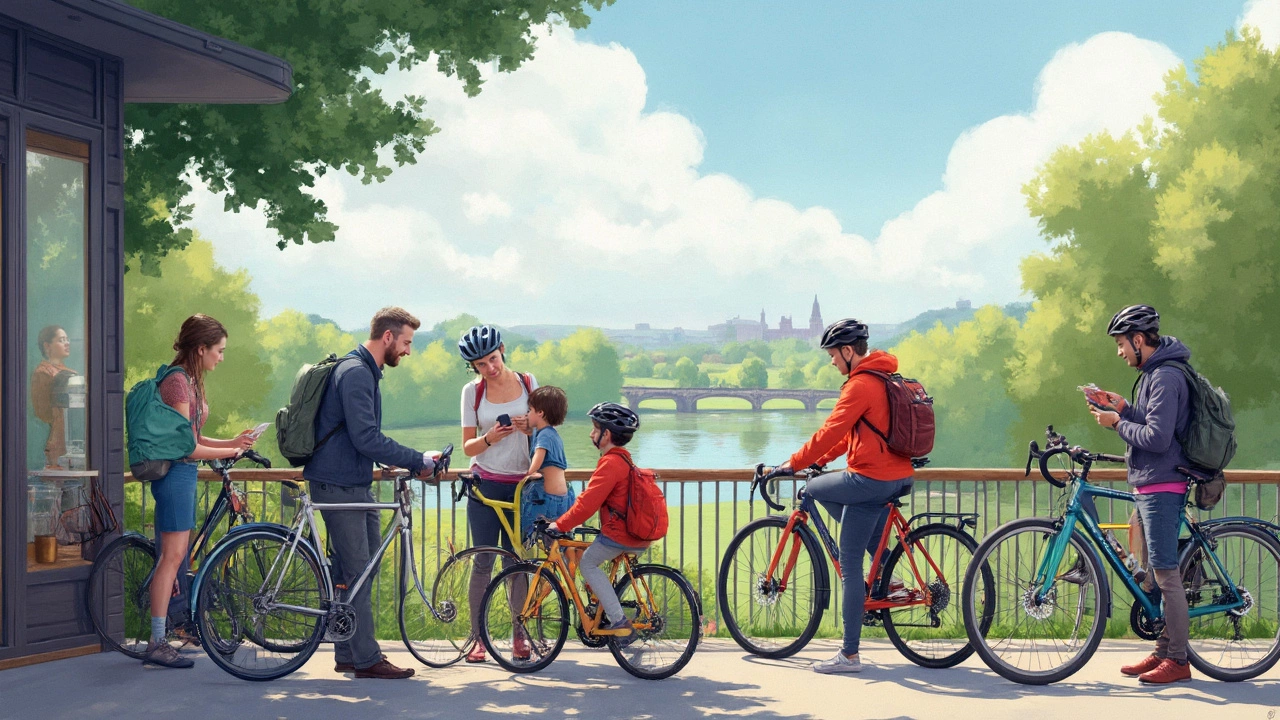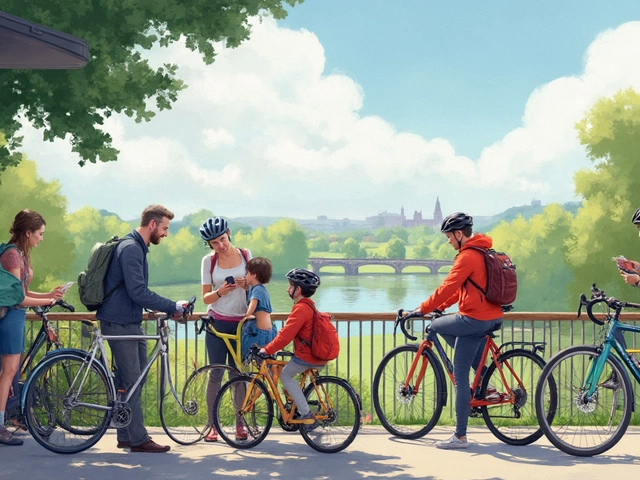Thinking about using Bikemap to find your next cycling route? You're probably not alone—this app pops up any time someone talks about mapping bike rides. But before you hand over your money or even your time, it's smart to know what you're actually dealing with.
There are a ton of cycling route apps out there, but Bikemap is all about showing you mapped routes, letting you plan your own, and helping you stay on course while riding. Sounds perfect if you live somewhere with winding backroads or sketchy bike lanes. But not every "best cycling app" headline matches the reality once you're out on that bumpy city street or lonely country lane.
So, is Bikemap really worth the download—or even the subscription? Let's cut through the buzz and get into what really matters: what you can expect from the free plan, what the paid version actually gives you, and tricks for making the most of it if you do decide to try. Get ready for some real talk from someone who's used and tested these features in the wild, not just from a desk.
- What Bikemap Actually Does
- Core Features: Free vs Paid
- Real-Life Experience and Accuracy
- Where It Shines, Where It Stumbles
- Do You Really Need Bikemap Pro?
What Bikemap Actually Does
If you’re looking for an app to help sort out your next ride—whether it’s your daily commute or a weekend adventure—Bikemap’s main goal is to make finding, planning, and navigating cycling routes as simple as possible. The app dumps you into a map loaded with public routes created by other users, plus you can build your own or just punch in a destination and find bike-friendly ways to get there.
One of its big draws? Coverage. Bikemap has route data for over 100 million kilometers across 100+ countries. Basically, unless you’re in the middle of nowhere, there’s probably something mapped nearby. It pulls from community uploads, official data, and its own mapping efforts, so the variety is pretty wild—from easy city shortcuts to multi-day touring epics.
Here’s what you get when you pop open Bikemap:
- Browse public cycling routes by area, rating, or difficulty.
- Create your own route by dropping pins or drawing lines with your finger.
- Get turn-by-turn navigation with voice prompts (with some features locked behind a paywall).
- Download routes and maps for offline use if you pay for Pro.
- See real-time stats: distance, elevation gains, speed, and calorie estimates.
- Access heatmaps to see where most cyclists ride.
The app isn’t just for hardcore cyclists. If you ride to work, want to explore a new city, or just want to avoid busy roads, you’ll find options here. For anyone who likes numbers, check out how Bikemap stacks up according to recent app stats:
| Feature | Available Worldwide? | Free? | Pro Only? |
|---|---|---|---|
| Route Discovery | Yes | Yes | No |
| Offline Maps | Yes | No | Yes |
| Elevation Profiles | Yes | Yes | No |
| Live Navigation | Yes | Limited | Yes |
| Heatmaps | Yes | Yes | No |
What Bikemap doesn’t do: It’s not a fitness tracker like Strava, and it doesn’t come loaded with coaching or interval training features. It’s pretty much all about the route itself. If your main problem is not knowing where to ride or you want an easy way to follow a new path, that’s what it does best.
Core Features: Free vs Paid
Bikemap splits its features into two clear buckets: free users and those who pay for Bikemap Premium. Don’t expect all the bells and whistles with the free version, but you do get a fair bit to play with.
Here’s what you get for free:
- Unlimited route planning and searching—find a bike route, edit it, or create your own.
- Voice navigation while you ride, but only with an internet connection.
- Basic ride stats like distance, time, and speed when recording a trip.
- Access to the general map database in most countries (but you’ll need data on the go).
- User-uploaded routes—useful if you’re after popular paths or hidden local gems.
Now, the Premium (paid) version flips a bunch of extra switches:
- Offline maps—the big draw if you lose signal or don’t want to use mobile data.
- Advanced navigation, including rerouting if you go off-course.
- 3D map views and extra map types, such as satellite or terrain overlays.
- Live navigation with turn-by-turn directions and voice prompts offline.
- Heatmaps—these show the most popular cycling routes, super helpful for avoiding sketchy areas or finding smoother, busier paths.
- Prioritized support and some early access features (nothing too wild as of now).
If you’re wondering about the real-world difference, check this:
| Feature | Free | Paid |
|---|---|---|
| Route Planning | Yes | Yes |
| Offline Maps | No | Yes |
| Turn-by-Turn Navigation | Yes (online only) | Yes (offline/online) |
| 3D/Extra Map Layers | No | Yes |
| Heatmaps | No | Yes |
| Support | Standard | Priority |
The Bikemap free plan is decent if you’re mainly riding where you have steady signal (city commuters, we’re looking at you), but you’ll hit a wall fast if you ever want offline access, extra navigation tools, or fancier maps. The paid version starts at around $39.99 a year, but prices shift depending on where you live and the time of year. Always watch for promos or trial periods before committing.

Real-Life Experience and Accuracy
Let’s get real—what matters most is whether Bikemap helps you get from A to B without hassle. Out on the road, accuracy is king. In big cities like Berlin, New York, or London, Bikemap’s turn-by-turn directions usually land within a couple meters of where you actually ride. That’s pretty solid, so you’re not getting lost at every fork. Still, it’s not flawless. Sometimes the app suggests cycling through busy intersections or routes that turn out to be construction zones. Bikemap relies heavily on user-generated data, so things like new bike paths or tricky detours can lag behind real life.
You’ll notice the difference in rural areas or smaller towns. There, Bikemap gets a bit shaky. Some rural routes marked as “bike friendly” ended up being gravel pits or lanes with zero shoulder. This isn’t unique to Bikemap—a lot of cycling apps suffer from the same issues, especially outside well-mapped cities.
“Bikemap offers a vast library of user-submitted routes, but riders still need to use local smarts to avoid blocked, rough, or unsafe roads.” — Cycling Weekly, August 2024
If you’re using the free version, expect some gaps in live navigation. It’ll show your general route, but with less detail and fewer real-time updates. The paid plan steps this up with voice navigation and offline maps. Offline mode rocks for places without phone signal, but remember, those maps don’t update themselves, so roadworks or new paths won’t show up until someone uploads info later.
A tip from folks who ride every day: double-check your planned Bikemap route with Google Street View or a local city cycling map before you set out, especially in unfamiliar areas. Both apps have come up short when it comes to closed roads or surprise stairs. It’s no fun hauling your bike down a flight of steps because the app said, “Yes, that’s fine.”
- Check recent user comments on a route before trusting it fully.
- If you spot a mistake or outdated info, report it in Bikemap—the updates help everyone.
- Save maps offline if your area has spotty reception, but update them often.
Bottom line: Bikemap nails navigation in most cities, but always double-check, especially if you’re planning a longer or less common route. It’s a helpful tool, not a miracle worker.
Where It Shines, Where It Stumbles
Bikemap does some things surprisingly well, especially for city riders and anyone who likes to explore new routes without fuss. First off, its database is impressive—over 11 million cycling routes worldwide. That’s a ton of options, and you’re bound to find something close to your area, even if you live somewhere off the beaten path.
Turn-by-turn navigation works like you’d expect, and it’s handy that the app calls out potholes, construction, or blocked roads based on user input. For commuters or casual explorers, this can save you from annoying surprises on your way to work or when you’re just out for some exercise. What’s also cool: the offline maps feature in the paid plan. If you get stuck in a dead zone with zero cell signal, you still have your route handy—no panicking or backtracking. You can also swap between different map styles, so if you want something like OpenCycleMap or just a simple street map, you’re covered.
- If you love stats, Bikemap lays everything out. See your speed, elevation, distance, and ride history in one place. You even get graphs and comparison charts right in the app. Makes it easy to track progress or brag to your riding buddies.
- Community and sharing features are decent. You can find routes local cyclists have actually ridden, not just computer-generated lines. Sometimes, that means spotting hidden gems or safer bike paths you’d never otherwise find.
But here’s where Bikemap stumbles. Sometimes the route suggestions aren’t realistic—like sending you through muddy hiking trails with your road bike or taking you onto busy roads without any bike lane. The app’s popularity is a double-edged sword: tons of routes, but not every one is accurate or well-vetted. You might see a five-star route on the app, but in real life, someone added it just to test the feature or it hasn’t been updated in years.
And about that paid plan: voice navigation and offline downloads are locked behind a paywall. If you only bike now and then, you may not need it since the free plan handles basic route planning. Real road warriors who rely on dependable directions, though, will quickly bump into the limits.
Device compatibility can get frustrating, too. While maps sync easily on iOS and Android, exporting to standard GPS computers or older Garmins is hit-and-miss. Finally, don’t expect flawless real-time rerouting if you wander off course—the app can lag or even crash, especially on older phones.
So, is Bikemap the be-all and end-all for cyclists? It nails a handful of things: rich route database, community-driven info, decent navigation, and pretty good ride stats. But stay sharp—rely too much on it, and you could land in sticky situations or find basic features locked until you pay up.

Do You Really Need Bikemap Pro?
Alright, here’s where most folks start asking: is paying for Bikemap Pro actually worth your cash, or can you stick with the free version? It’s a fair question, especially since the price isn’t exactly pocket change ($39.99 a year or $9.99 a month as of 2025). What do you even get for your money?
Bikemap Pro unlocks a handful of features that aren’t bad if you find yourself cycling a lot. The big draw is offline map access. Downloading maps lets you navigate even when there’s zero signal—which is a lifesaver if you ride out of town or in rural spots. The Pro version also packs in voice navigation, real-time route tracking, turn-by-turn instructions, and detailed map layers for things like terrain or bike lanes. If you’re planning a big bike tour or commute daily, that offline mode alone can be a game-changer.
But what about the free version? You still get access to millions of routes, basic planning, and live tracking with your phone’s data. For a lot of city riders or anyone who sticks to familiar roads, that’s honestly enough. The biggest pain with the free plan comes up if your data signal drops—you’re pretty much stuck unless you’ve memorized your route. Free users also miss out on premium map types like 3D or “cycling optimized,” which just means less info about hills or surfaces.
- If you love exploring new places, especially off the beaten path, Pro is the way to go. Not having to worry about losing GPS is peace of mind.
- Commuters who bike the same neighborhood loop probably won’t feel much difference sticking with free—unless you like ultra-detailed directions or custom map overlays.
- Keep in mind: Bikemap Pro doesn’t add route creation or editing tools you can’t get for free. It boosts how you view and use existing routes, especially when offline.
One thing to try before you pay: use the free trial. Bikemap dangles a week of full Pro features, no credit card needed. Test it on your toughest local ride—dead zones, dodgy signal, the works. If offline navigation or extra details save your bacon, you’ll appreciate the upgrade. If you’re left feeling, “Eh, Google Maps could do most of this,” don’t sweat going back to free.
Bottom line: if Bikemap is your go-to for big rides, traveling, or you regularly hit roads less traveled, Pro has real value. For quick spins in the city, the basics are solid enough. Paying up only makes sense when those premium perks fit your actual rides, not just for the sake of shiny features.






